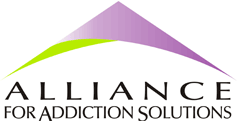
Detoxification
Contents
Detoxification
The term detoxification is generally understood to be a stage in early recovery entailing the rapid withdrawal or discontinuation of drugs and alcohol. AAS honors all of the phases of early detoxification before an individual achieves vibrant recovery. In fact, we have found that judicious use of pharmaceuticals can help people taper off the use of benzodiazepines.
Recognizing that the danger of addicting clients to detox drugs is very real, some programs recommend lifetime use of opiates such as methadone or Suboxone or even antidepressants. Most AAS members strongly object to this and aim to correct the underlying biochemical problems with natural alternatives and taper people off drugs of any kind, with the aim of total freedom from pharmaceutical drugs.
AAS members also view detoxification as ideally extending beyond drug withdrawal. To promote true wellness, the program should also entail the elimination of any or all toxic substances from the body and brain that could interfere with optimal functioning and full recovery, and not simply the removal of psychotropic substances commonly associated with addiction.
According to Charles Gant, MD of Syracuse, New York and Lyle Murphy, Director of Alternative to Meds Clinic, Sedona, Arizona, these other categories of toxins can include undesirable substances in otherwise perfectly nutritious foods. Some examples of unwanted substances are pharmaceutical medications, the toxins produced by chronic infections in various parts of the body such as the intestines (parasites), sinuses (yeast or mycotoxins), and dental cavitations (anaerobic bacteria), environmental and petrochemical poisons, heavy and toxic metals from water supplies, dental fillings, and certain fish, food additives, contaminants, and allergens.
These toxins have been shown to play an adverse role in the emotional stability of individuals and can interfere with the recovery process. Toxins that cause mood problems such as depression and anxiety can be obstacles to recovery as an addicted person resorts to addictive chemical shortcuts to bring about temporary mood stabilization.
Some of the techniques combined or individually used to detoxify include specific oral or intravenous nutrient supplementation of products that pull toxins out of cells and into general circulation to be removed through the eliminative organs, including saunas and exercise to help remove toxins through the skin.
The information on this site is not intended or implied to be a substitute for professional medical advice, diagnosis or treatment. All content, including text, graphics, images, and information, contained on or available through this web site is for general information purposes only. The Alliance for Addiction Solutions, it’s agents, representatives, directors, and members make no representation and assume no responsibility for the accuracy of information contained on or available through this or any other web site, and such information is subject to change without notice. You are encouraged to confirm any information obtained from or through this web site with other sources and review all information regarding any medical condition or treatment with your physician.
NEVER DISREGARD PROFESSIONAL MEDICAL ADVICE OR DELAY SEEKING MEDICAL TREATMENT BECAUSE OF SOMETHING YOU HAVE READ ON OR ACCESSED THROUGH THIS WEB SITE.
